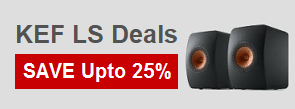Features
| Warranty length | 2 Years |
|---|---|
| Brand | Cabasse |
Tech Specs
- Maximum Sound Level: 118dB mono, 124 dB in stereo
- Bandwidth: 14 - 27000 Hz
- Drivers: Medium-tweeter 13 cm (5”) coaxial BCI Woofer 25cm (13”) 25HELD
- Bass: 1000 W RMS / 2000 W peak
- Connectivity: Ethernet/WiFi, Bluetooth, SPDIF Optical, RCA Analog, USB for music on external hard drives
- Audio Formats: MP3 – AAC – WMA – AIFF – FLAC - ALAC, Audio formats up to 24 / 192, 768kHz / 32 bits DAC
- Multi-room: Mono - Stereo with 2 speakers, Hi-Res Multi-room
- Compatible Streaming Services: Deezer, Qobuz, Tidal, Spotify, Web Radio, Napster
- Dimensions: 18kg/40lbs
- Finish: Black or White
Product Description
Cabasse Pearl wireless speaker is a now iconic French designed spherical speaker, made of the finest possible materials. This stunning speaker has the renowned Cabasse sound, delivered with purity and power. The speaker membranes are made of carbon fibre with fibreglass reinforcing and the drivers are made of aluminium. This is a powerful active speaker that can be used on its own or as a stereo pair.
The spherical shell is made of reinforced composite with a double construction. Additionally, pure Chromium rings and a metal grid cover the front. Two finishes are available, metallic black or Pearl white. Custom designed stands and a wall bracket are also available separately.
Triaxial driver configuration
The Pearl’s drivers have a triaxial configuration, with the bass, mid and high frequency drivers mounted on top of each other. This makes the speaker compact as well as powerful. The woofer cone is 200mm in diameter and has a large excursion of 30mm, for impactful bass. Audio playback is also enhanced by the Cabasse dynamic bass control. The driver configuration also delivers 360 degree sound. Additionally, a thermal radiator prevents distortion, even at high volumes. Finally the tweeter has patented components including a neodymium magnet.
Streaming versatility
The Pearl is an active speaker, in that it has a built in amplifier and streaming capability. Cabasse has their own app known as StreamCONTROL that offers multi-room support, so that you can send the same music to each room or a different song to each room. You can also stream via Bluetooth or via the Cabasse app. The Pearl can play hi-res files as well as local files and internet radio. There is also a programable Bluetooth remote, that has an innovative round design. Rotate the outer ring to control the volume.
High specification amplifier
The Pearl’s amplifier set has a wide frequency response from 14Hz to 27 kHz as well as up to 1000 watts of power. The THD is only 0.005% . Connectivity is good with wired Ethernet as well as Wi-Fi and an optical digital input. There is also a USB port for external drives. Finally there is an analogue RCA input.
Class D amplifiers
Most amplifiers were once linear. These provide good sound quality but are power hungry. As a result compact high-power amplifiers now operate in class D. Class D is essentially digital and uses pulse width modulation to provide the output. This makes the amplifiers very efficient. The output transistors are either fully on or fully off, unlike linear amplifiers. These always have some current flowing in the output. Class D has an efficiency of around 90% and are they are commonly used in active speakers, where space is at a premium.
Why spherical speakers?
Spherical speakers have a single acoustic point source. This allows sound to expand in all directions. As a result, there are no square edges, that can cause refraction and phase errors. Therefore spherical speakers can fill a room, and the sound is independent from the listeners position. High power speakers can be built that are small but do not dominate the décor.
About Cabasse
Cabasse are renowned for their coaxial speaker designs. This allows for a compact spherical speaker to fill every corner of a room. Cabasse was founded in 1950 and has a French flair for design. Interestingly, Cabasse was involved in early cinema multichannel sound. They developed coaxial speakers for cinemascope formats that used seven channels, such as Cinerama. In 1958 they developed a three-way active speaker. Since then they have continued to innovate with advanced new materials such as carbon fibre and composites. They also make more conventionally shaped speakers.











































































